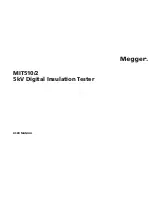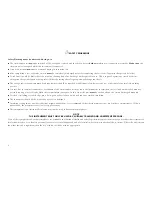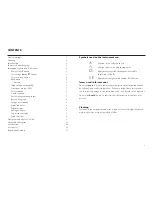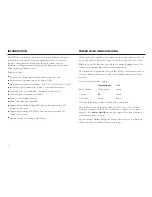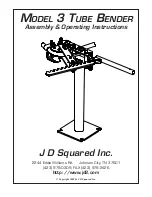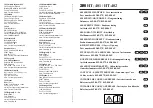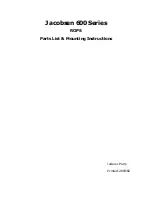
2
NOTE
THE INSTRUMENT MUST ONLY BE USED BY SUITABLY TRAINED AND COMPETENT PERSONS.
Users of this equipment and/or their employers are reminded that National Health and Safety Legislation requires them to carry out valid risk assessments of
all electrical work so as to identify potential sources of electrical danger and risk of electrical injury such as inadvertent short circuits. Where the assessments
show that the risk is significant then the use of fused test leads may be appropriate.
G
SAFETY WARNINGS
Safety Warning must be observed during use.
n
The circuit under test
must
be switched off, de-energised, isolated and checked to be safe
before
insulation test connections are made.
Make sure
the
circuit is not re-energised whilst the instrument is connected.
n
Circuit connections
must
not be touched during an insulation test.
n
After completing a test, capacitive circuits
must
be completely discharged before disconnecting the test leads. Capacitive charges can be lethal.
n
Tested items should be firmly shorted out with a shorting link, after discharge, until required for use. This is to guard against any stored dielectric
absorption charge subsequently being released thereby raising the voltage to potentially dangerous levels.
n
The voltage indicator and automatic discharge features should be regarded as additional safety features and not a substitute for normal safe working
practice.
n
It is rare, but in certain circumstances, breakdown of the circuit under test may cause the instrument to terminate the test in an uncontrolled manner,
possibly causing a loss of display while the circuit remains energised. In this event, the unit
must
be turned off and the circuit discharged manually.
n
Test leads, including crocodile clips, must be in good order, clean and with no broken or cracked insulation.
n
The instrument should not be used if any part of it is damaged.
n
Insulation testing in wet weather conditions might be hazardous. It is recommended that this instrument is not used in these circumstances. If this is
unavoidable, the user must take all necessary precautions.
n
This instrument is not intrinsically safe and must not be used in hazardous atmospheres.

